"Attach to" parameters
Object properties
In JMobile Studio the properties of an object placed on a page can be set at programming time or configured to be dynamic. To change a property at programming time use the page toolbar or the property pane. Select the object first to see its properties displayed.

The page toolbar shows only the most common object properties, while the property pane show all the properties in a basic or advanced view.
To change a property value dynamically you can attach it to tags or variables.
Attaching a property to a tag
- Click + in the Properties pane.
- In Source choose the data source, in the list choose a protocol and the tag. Use the Search box to filter tags.
- Set the access type (for example Read Only). The Array Index field appears when the selected tag is an array to identify the element of the array to use. The indirect index mode, through an additional tag, is supported.
- Click OK to confirm.
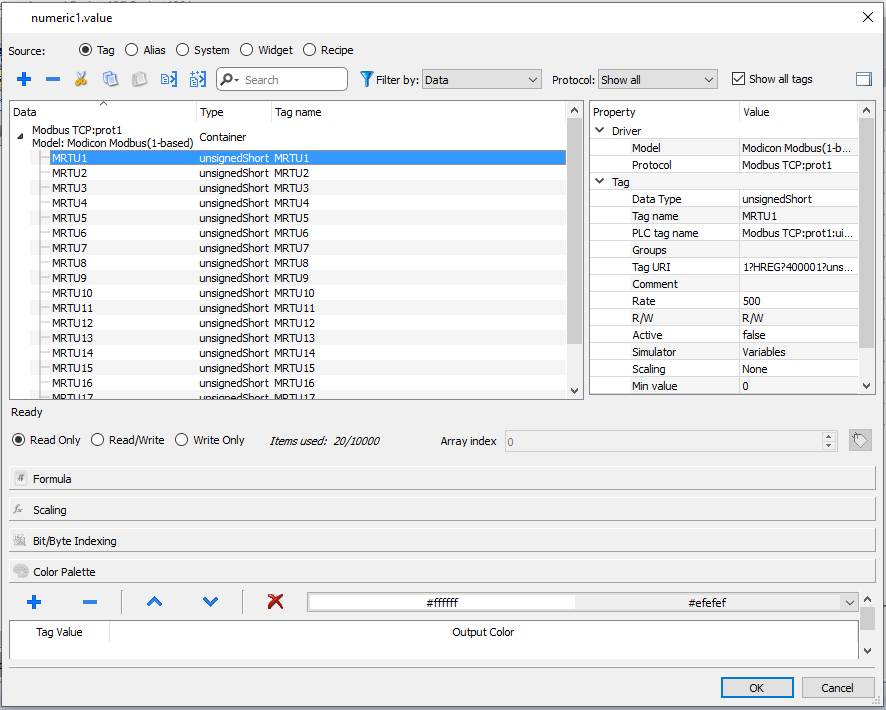
The icons adjacent to the tag name highlight when a definition does not match the tag definition in the dictionary, or when missing. If the Show all tags is selected, all the dictionary tags are shown also if not imported within the application. A double-click will import the tags from the dictionary.
Data sources
Elements to which an object property can be attached:
| Data source | Description |
|---|---|
| Tag | Tag defined in the Tag Editor |
| Alias | Indexed tag address |
| System | Predefined system tags (see "System Variables (Attach To)") |
| Widget | Connect to a widget property (for example, value of a slider widget) |
| Recipe | Data from the Recipe Manager (see "Recipes") |
Advanced search
Various syntax options can be applied to search box:

| Main options | Function |
|---|---|
| Wildcards | Search using simple wildcards matching . Character '?': matches any single character. Character ' *': matches zero or more of any characters." […]": sets of characters can be represented in square brackets. |
| Regular Expression |
Describes character pattern. See https://en.wikipedia.org/wiki/Regular_expression for additional details regarding regular expressions. |
Filtering tags
Choose various tag filter criteria:
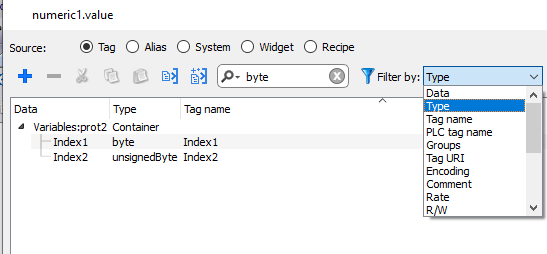
Showing dictionary tags
When Show all tags is checked, tags that belong to one dictionary but have not been imported yet, appear in blue color. You can select and double-click a tag to import it into the project.
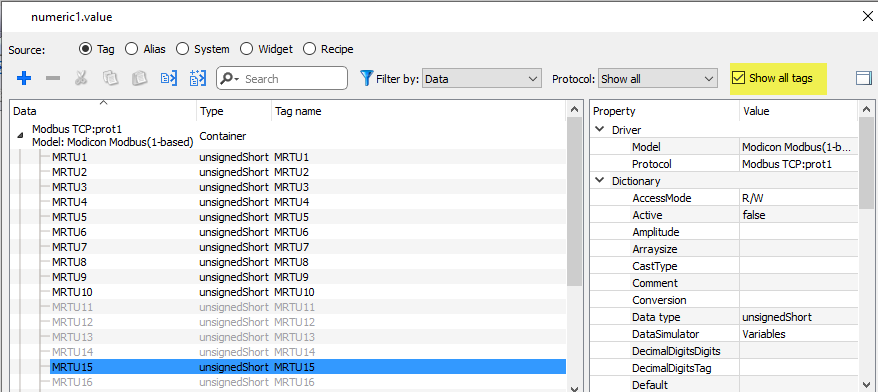
Converting tag value

Scaling tab converts the tag value. In By Range section set the input and output range: the system will automatically calculate the scaling factors.
Extract tag bit/byte based on index
Allows extracting a single bit or byte content from a word depending on the specified bit or byte number

Use a formula to calculate the value to use
Allow to use a formula to calculate the value to use. See "Formula" chapter for additional details.
Note that using a formula the datalink will be ReadOnly
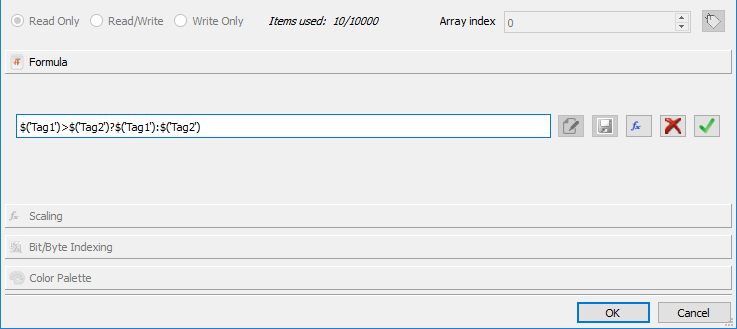
Mapping tag values to color
Allows to mapping numeric or string tag values to colors. For example, this option can be used to change the color of a button.

| Section | Function |
|---|---|
|
|
From the toolbar add/remove or move up/down the colors lines. The tag value is editable and you can modify the sequence values. |
|
|
Last defined color combination is saved automatically and can be retrieved from the color toolbar. |
Tag value could be a range of values separate by a comma, examples:
- 5, 10-15, 20
- A, AB, C
It is responsibility of the application's developer define all items correctly to cover all possible application’s values, we could have unexpected color when the value is not defined inside the defined colors palette.
Note that the mapping tag value to color will return a string data type (e.g. “#FF0000”)
Datalink Serialization
Instead of use the above “Attach to…” dialog box, datalinks can be entered, or modified, manually.
Click a button in the Properties pane and enter the text that describe the datalink
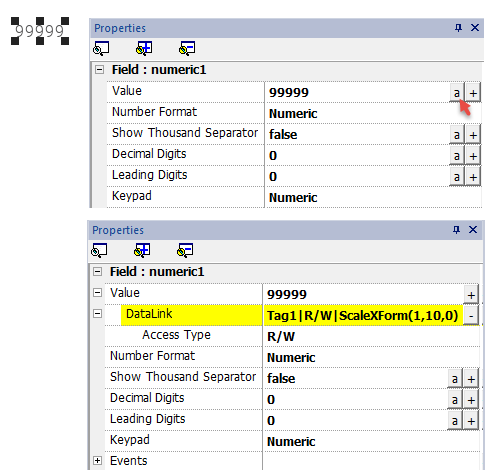
The data link format is:
Tagname [index] | [Atribute] | [XForm] | [XForm] | ...
on in case of formula:
= <formula>
Example:
- arrayTag[2]
- Tag[0|index]
- Alarm triggered:_SysPropMgr
- Tag|R/W|ScaleXForm(1,10,0)
- Tag|R/W|ScaleXForm(1,10,0)|ByteIndexXForm(1)|ColorPaletteCustomXForm(0#00aa7f,1#ff0000)
- =$('Tag1')>$('Tag2')?$('Tag1'):$('Tag2')
- =$Contains($('Tag4'),$('Tag3'))
- =$Pow(2,$('Tag2'))
